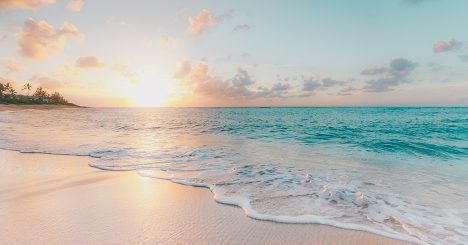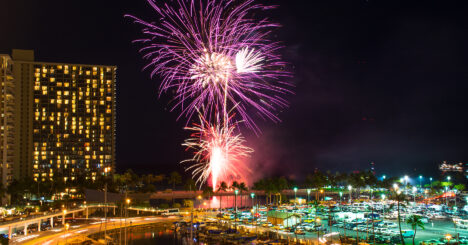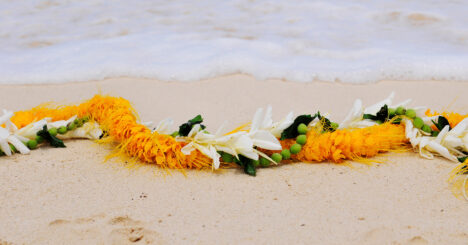By Roy A. Vitousek III, edited by Ellen R. Ashford
In 1995 I argued Public Access Shoreline Hawaii v. Hawai‘i Planning Commission, commonly known as “PASH,” before the Supreme Court of Hawai‘i.1 The increasing development of coastline on the island of Hawai‘i resulted in community opposition to the County’s issuance of a Special Management Area (SMA) use permit for a proposed resort development. The issue was whether a public interest group had legal standing to participate in contested case hearings before the planning commission as it considered whether to grant a special management area use permit which the court answered in the affirmative. The court ruled that the landowner’s private property rights were not absolute and that before it could grant development permits the Planning Commission had to consider the rights and interests arising out of traditional and customary native Hawaiian gathering practices.
The United States Supreme Court declined to review the PASH decision and in the quarter-century since, the appellate courts in Hawai‘i have worked to balance traditional notions of property rights—including the right to exclude—with the traditional and customary right of access.
As a practical matter, PASH led to the establishment of public access to beaches across land that is “less than fully developed.”2 The recognition that land use decisions must be made only after the impact of the proposed use on important cultural resources or practices has been meaningfully assessed, however, has continued to expand in the law as well as state, county, and community programs.
Upon being asked last year to reflect on the legacy of PASH, I find there is no one answer, no one legacy, positive or negative, and no one theme that brings together thirty years of trying to develop and implement a legal construct which enables people who are closest to the land to have their interests thoughtfully and rigorously taken into consideration where land uses are proposed which could adversely impact important cultural resources or practices. Instead, there are positive aspects of the PASH legacy and aspects that are not positive, or not-yet positive. I advocate a model of PASH rights based on mutual best interests of all people on the land that reflects the modern expression of traditional Hawaiian culture.
I. The Positive Legacy of PASH
A. Agency Decisions
There are now clear legal requirements and criteria for cultural impact assessment, historic preservation review, and formal consideration of customary and traditional practices as part of assessing applications for most forms of permits and approvals which would authorize the development.3 This is the most important, most concrete result of PASH.
Nearly every government permit which would authorize development of previously undeveloped land, by law, cannot be approved unless a formal assessment of historic sites, cultural resources, and cultural practices is conducted and formally considered by the approving agency.4 This includes district boundary amendments,5 changes in zoning,6 special management area use permits,7 conservation district use permits, shoreline setback variances, any actions which trigger HRS Chapter 343, special permits, use permits, subdivision applications, and grading permits for more than one acre. These changes, largely implemented by state statutes, county ordinances, and state and county regulations, have increased both public outreach before applications are filed and public notice of applications and hearings.
It is the big cases which blossom into community-wide controversy that get the attention of the appellate courts, the greater community, and the media. Certainly, the Thirty Meter Telescope at the Mauna Kea Science Reserve (TMT) is such a case.8 But when I personally look at the real on-the-ground legacy of PASH, I see the hundreds of matters in which I have been involved since 1990 and the tens of thousands of other permit applications over the last twenty-five years where the cultural assessment processes born in PASH were utilized, where information as to cultural and historical resources was carefully collected and presented to the relevant agency, where the agency formally considered the potential that proposed action might adversely impact customary and traditional practices or resources, and where the agency’s decision was guided by the now widely understood legal mandate to “protect the reasonable exercise of customarily and traditionally exercised rights of Hawaiians to the extent feasible.”9
B. Cultural Education and Preservation
PASH and its progeny also enhanced the role that Hawaiian cultural values play in education, planning, and environmental preservation throughout Hawai‘i.10 This can be contributed to the continued renaissance of Hawaiian culture and cultural values which led to PASH, but to which PASH and its progeny have also contributed.11 There is a growing recognition that Hawaiian cultural practices were instrumental in enabling a large indigenous population to live sustainably in a resource-limited environment and that, as such, these practices can serve as a model for humanity and for the future.
Over the last twenty-five years, numerous projects and programs on every island have worked to make cultural practices part of our daily lives and our future. These include sustainable fisheries,12 agriculture,13 loko i‘a (aquaculture systems that optimize natural patterns of watersheds, nutrient cycles, and fish biology),14 trail and access organizations,15 and land acquisition and conservation easements, often with assistance from county, state, and federally funded land acquisition and open space funds.16
These programs are a part of the legacy of PASH. More importantly, they are the way forward.
To carry forward the positive legacy of PASH, we must continue to exercise the cultural practices associated with the areas where we live. We must continue to make it real. We must make these practices part of our daily lives by walking the land with purpose and intention, fishing, hunting, gathering edible, medicinal, and decorative plants, and using these important resources to enhance our lives. By perpetuating these spiritual practices through regular exercise, we preserve them for the future.
II. Where there is Still Work to be Done
Kohanaiki is the home of the PASH case.17 The customary and traditional practice identified in PASH was the gathering of ‘ōpae ‘ula (shrimp) in the anchialine ponds to use as bait in offshore ‘ōpelu ko‘a (places where ‘ōpelu congregate in nearshore waters).18 Mahealani Pai’s description of this practice gave PASH, a beach access group, standing to participate in the permit hearing.19 Today, there is regulated public access to half of the Kohanaiki shoreline.20 This is a tremendous benefit to the general public and is a direct result of PASH.
One price of this public access is that the coastal anchialine ponds are tremendously degraded. During a recent visit to Kohanaiki, every anchialine pond I saw was in an advanced state of senescence: covered with algae mats and populated by guppies and other introduced fish species. I was not able to find a single ‘ōpae ‘ula, ‘ōpae lolo, or ‘ōpae lohena (indigenous shrimp).
Ka‘ūpūlehu Development (KD) gave us the Ka Pa‘akai decision. At KD, the primary cultural practices identified were the gathering of salt and fishing.21 Lineal descendants described gathering salt of the highest quality at Kalaemanō and subsistence fishing and gathering of limu (seaweed) and ‘opihi (limpets) along the coastline. Their testimony was born of personal and family experience.
The Ka Pa‘akai litigation resulted in certain areas being set aside for cultural use and public shoreline access, parking, and trails upon the opening of the golf course.22 Aside from the “front row” lots, most are undeveloped and unsold. Grading and construction are still ongoing.
Over the years, KD decided not to develop a golf course, so it did not develop public access. Between 2001 and 2019, there was no public access to the Ka‘ūpūlehu/Kalaemanō shoreline through KD. In 2019, KD applied to extend some of its zoning conditions. In a hearing before the Leeward Planning Commission, the fact that KD had not provided public access because the timing of public access was tied to development of the golf course which KD had decided not to develop was raised. The extension of KD’s zoning allowances was conditioned on KD’s provision of public shoreline access. Limited public access to the shoreline was opened in 2019.
In the interim, a developer-sponsored group called the Ka‘ūpūlehu Marine Life Advisory Committee (KMLAC) proposed creating a no-fishing zone from the south side of the Kūki‘o Resort through the Ka‘ūpūlehu Resort and Kona Village Resort, to Kalaemanō on the north side of KD.23 KMLAC included lineal and cultural descendants.24 The group advocated for a ten-year complete ban on any form of fishing or marine gathering along the same coastline involved in Ka Pa‘akai.25 Governor Ige approved the creation of the new marine reserve at Ka‘ūpūlehu on July 29, 2016.26
I was at a meeting at KD in 2019 where the developer’s representative explained to KD homeowners that while KD was going to be required to provide public access to the shoreline, “it should not be a problem” because no fishing was allowed and most of the people who wanted public access to the coastline would have been fishermen.
I myself gather salt at Kalaemanō. I have been doing this regularly for decades.
Figure 1 – This is what high-quality salt (ka pa‘akai) from Kalaemanō looks like:

Figure 2 –This is what the salt that you can find on the coastline in front of KD looks like today:

It used to look like the salt in Figure 1. For the last five years, it has looked like the salt in Figure 2. Dirt and rock powder from the grading activity, and from graded but not yet vegetated lots, blow into the salt pools and pans on the coast. Is this the legacy of PASH and Ka Pa‘akai?
III. PASH “RIGHTS” Based on Mutual Best Interests
I hope that as the legacy of PASH grows, we can move to a model of PASH rights based on cooperation and the mutual best interests of all people on the land. The Hawai‘i Supreme Court has repeatedly stated that “the non-confrontational aspects of traditional Hawaiian culture”27 and the “traditional Hawaiian way of life in which cooperation and non-interference with the well-being of other residents were integral parts of the culture”28 were important factors to reduce the risk that the exercise of customary and traditional rights and practices would cause potential disturbance or disruption to the legitimate interest of others in the community.29
These rights and practices grew out of a cooperative model of access to resources necessary to sustain life in pre-contact Hawai‘i, and, as in all cultures, some people are more cooperative and non-confrontational than others. Where some people exercise and defend cultural and traditional rights for their own intrinsic importance, others weaponize traditional rights to oppose developments which they do not want to occur. They are legally entitled to do this, but this relegates important traditional rights and practices to the contentious world of courthouses and agency hearing rooms.
I have spent my life in Hawai‘i on the land and in the ocean. I fish, hunt, and gather. In the places I frequent, I have learned the ahupua‘a (ancient Hawaiian system of land division), the habitation sites and cultivation sites, the offshore ko‘a (fishing grounds),30 and more or less what grows where. I listen to and learn from other people of the land—fishermen, hunters, farmers, scientists, practitioners, landowners, and regulators—people who do the things I do and do them better.
I believe that making a real effort at cooperative, non-confrontational access should be a prerequisite to claiming PASH rights in court or agency processes. It would be most consistent with traditional practices if people seeking to exercise PASH rights on lands owned by others would communicate their interest and seek cooperative access directly with the landowners before exercising access and gathering rights and certainly before going before agencies or courts to assert and/or enforce them. Gatherers should help landowners understand the nature and importance of traditional practices and landowners should help gatherers understand their concerns. This would avoid disputes and might help the decision-makers analyze the interests of both parties, assess what is a reasonable or unreasonable exercise of rights, and help find the balance.
The goal, and perhaps the most enduring legacy of PASH, is to have all of Hawai‘i’s people recognize the importance of traditional practices and to understand how mutual cooperation and mutual respect perpetuate these rights and keep them real and useful in the modern world.31
This article was published as part of the Fall/Winter 2021 issue of ke kumu, Cades Schutte’s client newsletter. Read the full publication, which explores some of the laws unique to Hawai‘i.
Footnotes
- Public Access Shoreline Hawai‘i v. Hawai‘i County Planning Commission (PASH), 903 P.2d 1246 (Haw. 1995).
- PASH, 1271.
- See e.g., PASH, 1258–63. Discussing traditional and customary rights under article XII, section 7 of the Hawai‘i Constitution.; In re Contested Case Hearing Re Conservation Dist. United States Application (Cdua) Ha-3568 for the Thirty Meter Telescope At the Mauna Kea Sci. Reserve (In re TMT), 431 P.3d 752, 775-76 (Haw. 2018). Citing HAW. CODE R. § 13-5-30 (2021) on general requirements for permits.
- See e.g., HAW. CODE R. § 13-5-39 (2021). Requiring a comprehensive management plan where development “may lead to significant natural, cultural, or ecological impacts within the conservation district.”; HAW. CODE R. § 13-5-2 (2021). Defining “[c]omprehensive management plan” as a “comprehensive plan to manage multiple uses and activities in order to protect and conserve natural and cultural resources.”; see generally PASH, 1271–72. Discussing case law regarding access under article XII, section 7 to “undeveloped lands”.
- See Ka Pa‘akai O Ka‘Aina v. Land Use Commission (Ka Pa‘akai), 31 P.3d 1068, 1084-87 (Haw. 2000). Discussing the sufficiency of Land Use Commission findings in granting a petition to reclassify a district.
- See PASH, 1257–58. Explaining that negative effects on native Hawaiian cultural resources and historic sites are adverse effects for purposes of a Special Management Area (SMA) use permit and that “the HPC may not issue a SMA use permit unless it finds that the proposed project will not have any significant adverse effects.”
- See generally HAW. CODE R. § 13-5-1 (2021). Setting forth administrative rules “to regulate land-use in the conservation district[.]”
- In re TMT, 752.
- Ka Pa‘akai, 1072. Citing PASH, 1271 n.43.
- See e.g., In re TMT, 752; Kaleikini v. Yoshioka, 283 P.3d 60 (Haw. 2012).
- See e.g., Pele Defense Fund v. Paty, 837 P.2d 1247 (Haw. 1992); Kalipi v. Hawaiian Trust Company, 656 P.2d 745 (Haw. 1982); Shari Nakata J.D., “Language Suppression, Revitalization, And Native Hawaiian Identity,” Diversity and Social Justice Forum 2 (Fall 2017): 14. Discussing the role of the Hawaiian language in the resurgence of interest in Native Hawaiian culture.
- E.g., Hā‘ena Community-Based Subsistence Fishery Area on Kaua‘i, Hui Maka‘āinana o Makana, Hui Mālama o Mo‘omomi on Moloka‘i.
- E.g., Waipā Foundation, Ulu Mau Puanui.
- E.g., Paepae o He‘eia, Kua‘aina Ulu ‘Auamo, Hui Mālama Loko I‘a.
- E.g., Na Ala Hele, Ala Kahakai.
- By Hawai‘i Land Trust, Trust for Public Land, and the Nature Conservancy.
- PASH, 1246.
- PASH, 1251 n.6.
- See PASH, 1251. Explaining that the circuit court’s order overturning the Commission’s decision to grant a Special Management Area Use Permit was “based in large measure on an affidavit filed in the circuit court by [Public Access Shoreline Hawai‘i] …”
- See generally PASH, 1273. Concluding that the Coastal Zone Management Act and the Hawai‘i Constitution require the preservation and protection of “native Hawaiian rights… when issuing a SMA permit”.
- Ka Pa‘akai, 1085.
- Ka Pa‘akai, 2a, 2c, 2d.
- Ka‘ūpūlehu Marine Life Advisory Committee (KMLAC), “Ka‘ūpūlehu Administrative Record,” February 2, 2016, https://dlnr.hawaii.gov/dar/files/2016/02/Kaupulehu_Administrative_Record_Public.pdf.
- Ka‘ūpūlehu Marine Life Advisory Committee (KMLAC), 14.
- Ka‘ūpūlehu Marine Life Advisory Committee (KMLAC), 12.
- DAR, “Marine Reserve Established at Ka‘ūpūlehu, West Hawai‘i,” State of Hawai’i – Division of Aquatic Resources, August 3, 2016, https://dlnr.hawaii.gov/dar/announcements/marine-reserve-established-at-kaupulehu-west-hawaii/.\
- PASH, 1268.
- Kalipi, 750.
- See PASH, 1268; Kalipi, 750.
- Coral, coral head, or fishing grounds. “Ko‘a (Definition),” Wehewehe wikiwiki, accessed September 17, 2021, https://hilo.hawaii.edu/wehe/?q=Ko%CA%BBa&l.
- See Roy A. Vitousek, PASH: No One Legacy, U. HAW. L. REV. (forthcoming 2021) for the extended version of this article.





